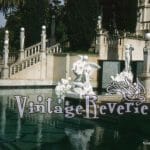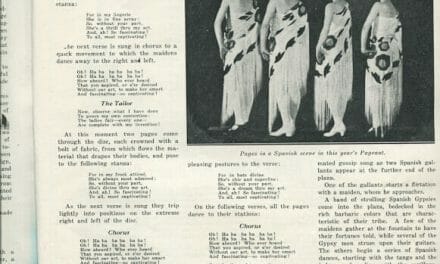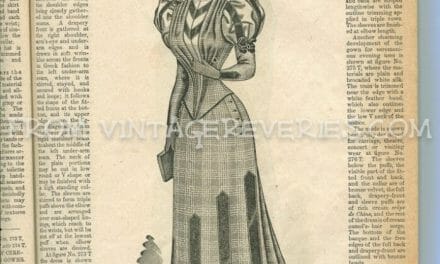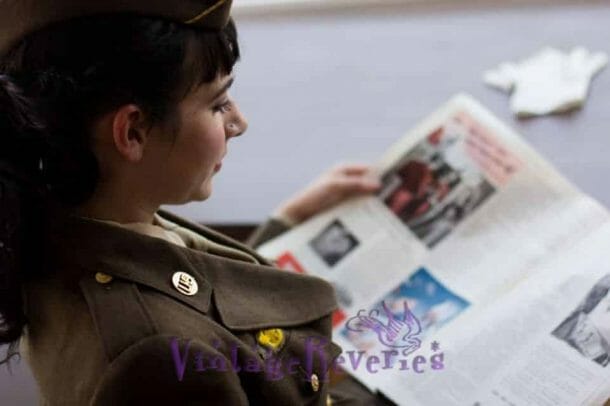
Lyrics to 1930s songs pt 2

This page offers a fascinating look at 1930s music through the lens of popular songs of the era, complete with lyrics that evoke the sentiments, humor, and culture of the time. It also highlights notable personalities, such as contralto singer and San Francisco radio personality Nola Day, whose story offers a glimpse into the glamorous world of radio and performance during the Great Depression.
Nola Day: The Magic Key of NBC Radio
The featured photo for this post is of Nola Day, a contralto whose unique journey exemplifies the opportunities and challenges faced by artists in the 1930s. Born in Iceland but raised in Tacoma, Washington, Nola’s life was a testament to hard work and versatility. As a teenager, she joined a touring group that entertained at logging camps in the Northwest—reflective of a time when live entertainment was essential in the absence of widespread recorded music.
After two years of touring, she pursued formal vocal training in Portland, Oregon, where she performed with the Portland Symphony Orchestra, a significant achievement for a young vocalist. Nola’s career then took her to Seattle where she performed in the operetta The Vagabond King, showcasing her classical roots, before venturing into dance orchestra performances—a broadening of her style that mirrored the burgeoning jazz and swing scenes of the 1930s. Her involvement with KOMO Radio and later NBC Radio in San Francisco marked the height of her career, allowing her to reach audiences across the country. The 1930s were a golden age of radio, and performers like Nola Day helped shape the exciting new cultural landscape. By the time she landed in New York with NBC, Nola had firmly established herself as a prominent voice of the era.
Now, let’s dive into some of the most iconic and curious songs of the 1930s, preserving the spirit of a turbulent decade filled with humor, longing, and resilience.
LA CUCARACHA
This traditional Spanish folk song, whose lyrics often varied, became particularly popular during the Mexican Revolution (1910–1920) and persisted in cultural memory throughout the 1930s. In its humorous and satirical tone, it provided social commentary. The lyrics featured here are a playful version that draws on themes of unrequited love and social class:
When a fellow loves a maiden
And that maiden doesn’t love him,
It’s the same as when a bald man
Finds a comb upon the highway.
All the maidens are of pure gold;
All the married girls are silver;
All the widows are of copper,
And old women merely tin.
Chorus:
La cucaracha, la cucaracha,
Doesn’t want to travel on
Because she hasn’t, oh no, she hasn’t
Marijuana for to smoke.
The reference to marijuana in the chorus was likely a humorous jab rather than a reflection of actual drug use, as songs often incorporated risqué or tongue-in-cheek elements to entertain listeners. This version possibly resonated with the countercultural themes of the day, though it retained its playful, nonsensical charm.
I’SE GWINE BACK TO DIXIE
This sentimental tune reflects both the nostalgia and contradictions of its time. Originally written in the 19th century, the song had a resurgence of interest during the 1930s. These lyrics tell the story of a character longing to return to the South, evoking memories of plantations, relationships, and a past now overshadowed by change:
I’se gwine back to Dixie,
No more I’se gwine to wander;
My heart’s turned back to Dixie,
I can’t stay here no longer.
I miss de ole plantation,
My home and my relation;
My heart’s turned back to Dixie,
And I must go.
Chorus
I’se gwine back to Dixie,
I’se gwine back to Dixie,
I’se gwine where the orange blossoms
grow;
For I hear the children calling
I see their tears a falling,
My’heart’s turn’d back to Dixie
And I must go.
I’ve hoed in fields of cotton,
I’ve work’d upon the river,
I used to think if I got off,
I’d go back there, no, never,
But time has changed the old man,
His head is bending low,
His heart’s turned back to Dixie,
And he must go.
I’m trav’ling back to Dixie,
My step is slow and feeble,
I pray the Lord to help me,
And lead me from all evil.
And should my strength forsake me,
Then, kind friends, come and take me;
My heart’s turned back to Dixie,
And I must go.
Though the tune was popular with audiences, the terminology and themes also reflect the racialized sentiments of its original creation. For African Americans, many of whom escaped Jim Crow hardships by migrating North, such songs often carried bittersweet and complex interpretations in light of realities like segregation and systemic inequality.
Here is Alma Gluck, singing “I’se Gwine back to Dixie” with a chorus comprising Lambert Murphy, Harry Macdonough, Frederick J. Wheeler and William F. Hooley, sings ‘I’se Gwine Back to Dixie.’ The orchestra was conducted by Walter B Rogers and the recording was made at Camden on 15 February 1916.
Ironic that I could find an audio recording of this song, but I’m unable to find the version of La Cucaracha with the lyrics above.
ONE, TWO, THREE, FOUR
This playful, counting-themed rhyme captures the cheerful simplicity of early 20th-century children’s music while doubling as entertainment for general audiences. The multi-lingual verse hints at a fascination with internationalism that emerged in the interwar period as cultures mingled globally through music, media, and literature:
One, two. three, four!
Sometimes I wish there were more.
Eins, swei, drei, vier!
I love the one that‘s near.
Eeeny. meeny, meiny, mo!
So says the heathen Chinee.
80, girls, beware, and boys, take care!
One. two and three.
Evoking the charm of vaudeville-era humor, the song makes an oblique nod to Chinese culture with phrases like “Eeeny, meeny, meiny, mo! So says the heathen Chinee,” reflecting the casual exotification of non-Western cultures typical of the time.
CIRIBIRIBIN
This romantic ballad paints an image of wistful, moonlit longing, capturing the essence of 1930s love songs performed by crooners and orchestras:
I am waiting here for you love,
As the evening breezes blow,
Watching the shadows of the river,
As they flit both to and fro,
I have come to see the love light
dancing in your eyes of blue,
And to hear you softly whisper that
to me you’ll e’er be true,
Ciribiribin, Ciribiribin, Ciribiribin,
Ciribiribin, the moon looks down upon
our happiness serene,
Ciribiribin, the stars bow down before
thee,
O my radiant queen,
Ciribiribin, more love than mine for
thee the world has never seen.
Ciribiribin, Ciribiribin, Ciribiribin, my
radiant queen.
Named after the haunting refrain “Ciribiribin”, the song hearkens to the era of intimate parlor music and serenades. With its poetic imagery of love, stars, and rivers, it aligns with the sophisticated sensibilities of the era’s more highbrow listeners.
THE LOST CHORD
A deeply spiritual piece, The Lost Chord gained popularity as a song of reflection. Written in the late 19th century and treasured again in the 1930s, it symbolized the quest for meaning in life’s chaos:
The song’s theme of yearning for transcendence resonated during the 1930s, a decade marked by economic hardship and uncertainty. It was a staple in parlors and church recitals, often performed on the very instruments described within.
Full lyrics to The Lost Chord:
Seated one day at the organ,
I was weary and ill at ease,
And my fingers wandered idly
Over the noisy keys;
I know not what 1 was playing,
Or what 1 was dreaming then,
But I struck one chord of music
Like the sound of a great Anien,
Like the sound of a great Amen.
It flooded the crimson twilight
Like the close of an Angel’s Psalm,
And it lay on my fevered spirit
With a touch of infinite calm;
It quieted pain and sorrow,
Like love overcoming strife;
It seemed the harmonious echo
From our discordant life;
It linked all perplexed meanings
Into one perfect peace,
I trembled away into silence,
As if it were loath to cease.
l have sought, but I seek it vainly,
That one lost chord divine,
Which came from the soul of the organ
And entered into mine.
It may be that Death’s bright Angel
Will speak in that chord again,
It may be that only in Heav’n
I shall hear that grand Amen;
It may be that Death’s bright Angel
Will speak in that chord again,
It may be that only in Heav’n
I shall hear that grand Amen.
HERE WE GO ‘ROUND THE MULBERRY BUSH
A cheerful nursery rhyme, this tune transcends generations and reflects daily life in a humorous way, mirroring the repetitive tasks and rituals of households during the Great Depression. Each verse described a chore set to upbeat rhyme, often light-hearted enough to bring smiles even in the harshest times:
Here we go ’round the mulberry
bush,
The mulberry bush, the mulberry
bush,
Here we go ’round the mulberry
So early in the morning.
This is the way we iron our clothes,
lron our clothes, iron our clothes,
This is the way we iron our clothes,-
So early Tuesday morning.
This is the way we scrub the floor,
Scrub the floor, scrub the floor,
This is the way we scrub the floor,
So early ‘Wednesday morning.
This is the way we mend our clothes,
Mend our clothes, mend our clothes,
This is the way we mend our clothes,
So early Thursday morning.
This is the way we sweep the house,
Sweep the house, sweep the house,
This is the way we sweep the house,
So early Friday morning,
Additional verses noted tasks such as ironing clothes, scrubbing floors, and sweeping houses—domestic routines that formed the backbone of daily life, especially for women tasked with maintaining their homes amid economic constraints.
Conclusion
Music of the 1930s offered both escapism and reflection, blending romanticism, satire, and cultural commentary. From humorous verses to sentimental ballads, these songs reveal the complexities of a world recovering from upheaval and rising to new artistic heights. While some lyrics reflect now-antiquated attitudes, they also illustrate the resilience and creativity of those navigating a pivotal moment in history.


















You must be logged in to post a comment.